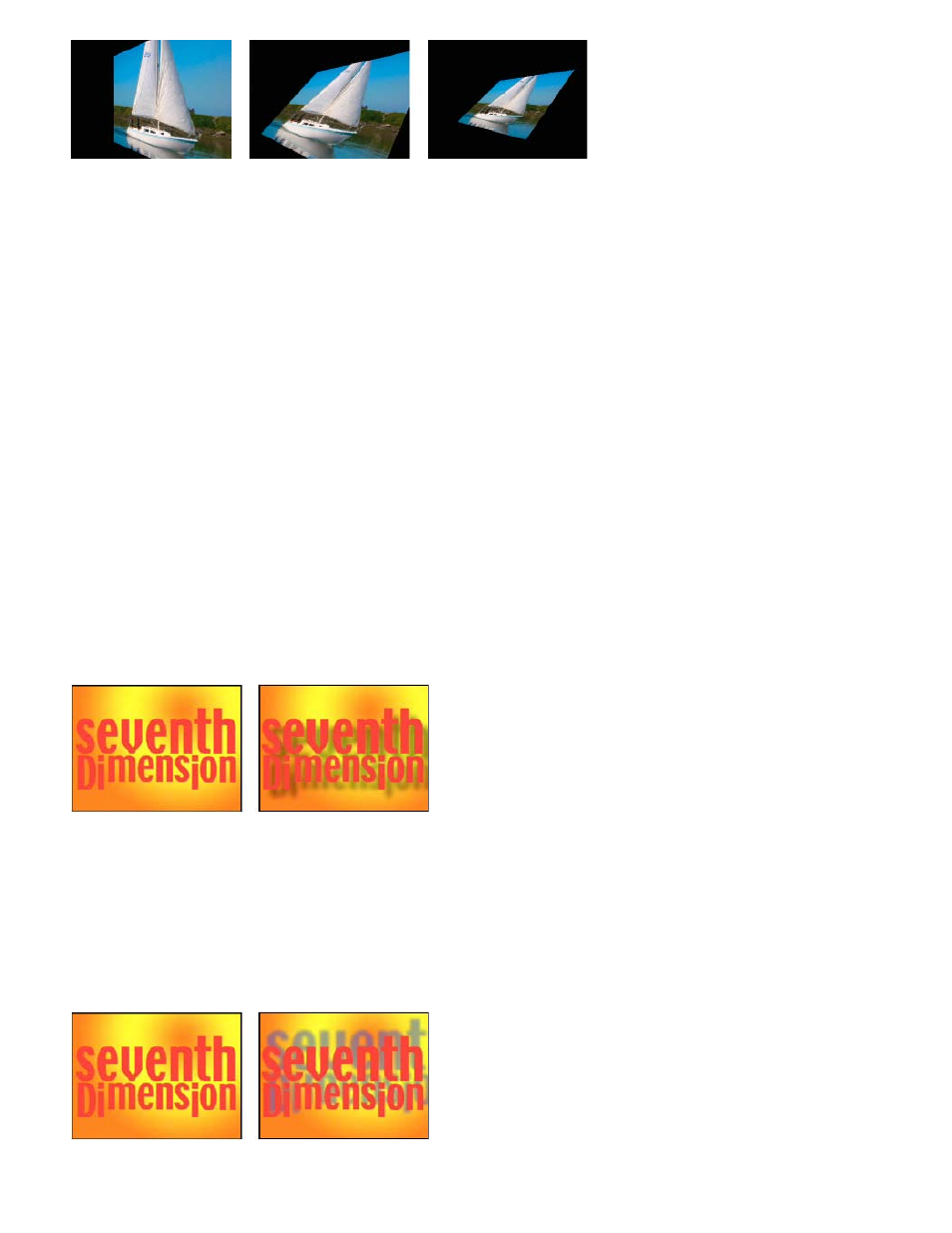Adobe Premiere Pro CS6 User Manual
Page 422

Basic 3D effect: Swivel (left), Swivel and Tilt (center), and Swivel, Tilt, and Distance (right)
Swivel Controls horizontal rotation (rotation around a vertical axis). You can rotate past 90° to see the back side of the image, which is the mirror
image of the front.
Tilt Controls vertical rotation (rotation around a horizontal axis).
Distance To Image Specifies the image’s distance from the viewer. As the distance gets larger, the image recedes.
Specular Highlight Adds a glint of light that reflects off the surface of the rotated image, as though an overhead light were shining on the surface.
If Draw Preview Wireframe is selected, the specular highlight is indicated by a red plus sign (+) if it isn’t visible on the clip (the center of the
highlight doesn’t intersect the clip) and a green plus sign (+) if the highlight is visible. You must render a preview before the Specular Highlight
effect becomes visible in the Program Monitor.
Preview Draws a wireframe outline of the 3D image. The wireframe outline renders quickly. To see your final results, deselect Draw Preview
Wireframe when you finish manipulating the wireframe image.
Bevel Alpha effect
The Bevel Alpha effect adds a beveled edge and lights to the alpha boundaries of an image, often giving 2D elements a 3D appearance. If the clip
has no alpha channel or if the clip is completely opaque, then the effect is applied to the edges of the clip. The edge created by this effect is
somewhat softer than that created by the Bevel Edges effect. This effect works well with text containing an alpha channel.
Bevel Edges effect
The Bevel Edges effect gives a chiseled and lighted 3D appearance to the edges of an image. Edge locations are determined by the alpha
channel of the source image. Unlike Bevel Alpha, the edges created in this effect are always rectangular, so images with non rectangular alpha
channels don’t produce the proper appearance. All edges have the same thickness.
Drop Shadow effect
The Drop Shadow effect adds a shadow that appears behind the clip. The shape of the Drop Shadow is determined by the clip’s alpha channel.
When you add a drop shadow to a clip, a soft-edged outline of the clip’s alpha channel appears behind it, as if a shadow is cast on the
background or underlying objects.
Unlike most other effects, Drop Shadow can create a shadow outside the bounds of the clip (the dimensions of the clip’s source).
Original (left), and with effect applied (right)
To render the shadow without the image, select Shadow Only.
Note: Because Drop Shadow works best when it’s the last effect rendered, apply this effect after applying all other effects. You can create a more
realistic-looking shadow on animated clips by applying and animating the Motion or Basic 3D effect prior to applying Drop Shadow instead of
animating the Fixed Motion effect because Fixed effects are rendered after Standard effects.
Radial Shadow effect
The Radial Shadow effect creates a shadow from a point light source over the clip it’s applied to, rather than from an infinite light source (as with
the Drop Shadow effect). The shadow is cast from the alpha channel of the source clip, allowing the color of that clip to influence the color of the
shadow as light passes through semitransparent areas.
Original (left), and with effect applied (right)
418
